As we enter the fourth quarter of a turbulent federal technology market, our Karsun experts are adapting to meet the evolving needs and missions of our agency customers. At the same time, meeting the demand for artificial intelligence enabled tools, our Karsun Innovation Center developed ReDuX, a comprehensive, end-to-end AI-accelerated modernization platform for the entire software development lifecycle. Today, as we close out the first half of 2025, we summarize some of the insights shared by experts in our Innovation Center and from our teams serving our U.S. government partners.
Bringing Thought Leadership to the IT Industry
Karsun thought leaders joined the AWS Mainframe Modernization Forum, the Federal Tech Podcast and other forums to share their experience with our ReDuX platform. In short, they observed, government modernization faces significant challenges from shrinking workforces and reliance on decades-old, mission-critical legacy systems which are difficult to maintain and often lack up-to-date subject matter expertise as veteran employees retire. This directly impacts federal customer experience, with only 23% of Americans finding federal services easy to navigate.
At these events, these Karsun experts revealed their ReDuX AI-powered modernization platform offers a crucial solution by deploying a digital workforce of AI agents. These agents effectively become Subject Matter Experts (SMEs) for legacy systems, blueprinting their architecture and converting intricate code to modern cloud platforms. This approach dramatically benefits development teams by accelerating complex migrations, enhancing code quality, and reducing costs, allowing human teams to focus on strategic, high-value work.
Ultimately, ReDuX aims to make federal services more usable, faster, and lead to more satisfied customers.
New Insights at Innovation Town Halls
In addition to our thought expertise at industry events, our experts currently working on real-world modernization engagements shared their experience at monthly Innovation Town Halls. We shared some of the insights from these experts on LinkedIn and in recent blogs.
That includes describing how Karsun innovates quickly while ensuring high-quality delivery. For instance, we shared how Karsun uses artificial intelligence to drive process improvement and ensure data privacy. ReDuX AI is central to this, enhancing productivity by 22.5% for mainframe modernization. For instance, ReDuX addresses code parsing challenges early then generates production-ready code faster than human teams. Karsun’s approach also integrates AI for human-centered design (HCD) and can enhance organizations’ Zero Trust Architecture posture. This comprehensive approach is underpinned by an innovation culture prioritizing cross-functional collaboration and strategic investment in the right technology and processes.
Whether internally at Karsun Innovation Town Halls or at industry events, insights from Karsun leaders support the adoption of emerging technology with the support of trusted exports. Whether you are seeking new frontiers with AI or seeking new methods to accelerate your modernization journey, contact Karsun to get started today!
As agencies such as the Internal Revenue Service shrink workforces and adopt leaner operational models, resources to support large scale modernization efforts are increasingly constrained. It is under this strain that John Gilroy opens a recent episode of the Federal Tech Podcast recorded live at the AWS Summit in Washington, D.C. Karsun Co-Founder Kartik Mecheri joins John and former General Services Federal Acquisition Services (GSA FAS) Commissioner Alan Thomas for a discussion on AI, digital workforces and the future of government modernization.
As John observes, the landscape of federal technology is at a critical juncture. Imagine systems born in the 1960s, like COBOL, still running essential government operations, while the average federal worker was born almost two decades later! This generational gap, combined with a shrinking government workforce creates an undeniable need for modernization.
At the same time, government agencies face immense pressure to deliver better experiences for their customers while grappling with complex legacy systems and processes that have been perfected over decades. These systems, often mainframes, are not just old; they are mission-critical, meaning they cannot be simply turned off for upgrades. Modernizing them is, as John notes, akin to “doing a little upgrade while you’re flying the plane”.
The AI Imperative: Introducing ReDuX AI-Powered Modernization
Enter Artificial Intelligence, AI. Government agencies are increasingly interested in AI for modernization to pick up the slack from fewer personnel and improve service delivery. Karsun Solutions offers a powerful tool designed specifically for this challenge: ReDuX.
The ReDuX Modernization Platform Addresses Several Key Pain Points:
- Declining Subject Matter Expertise: As veteran employees retire, the deep knowledge of these legacy systems often walks out the door with them. Redux.ai aims to capture this expertise.
- Complex Migrations: Converting decades of intricate code and interactions into modern architectures within a tight timeframe (e.g., 40 years of work into a 5-year project) is a monumental task.
How ReDuX Transforms Modernization
Redux uses specialized AI agents to streamline the modernization process:
- Blueprinting Agents: These agents delve into legacy code, extract crucial information, and integrate it with user guides and demonstrations. The goal is for the agents to become the subject matter expert on the legacy system.
- Modernization Agents: Once the legacy system is understood, these agents can convert the code to run on modern cloud platforms like AWS or Azure. They ensure the new system adheres to the required architecture and security posture of the agency.
Karsun has successfully used ReDuX to migrate multiple mainframe COBOL applications and other legacy systems (like Visual Basic 6, VB6) to modern technologies. This approach can accelerate modernization by 4x and reduce costs by 2x, reducing key modernization tasks by months and even years.
The Rise of the Digital Workforce
A key concept driving this transformation is the “digital workforce”. This involves building digital equivalents or “digital assistants” for every role in the software development cycle. Imagine:
- An architect agent that understands your target architecture and generates diagrams, documentation, and security architecture.
- Agents for creating unit tests, generating code, or ensuring security compliance.
- Agents for business analysts to create user stories.
The idea is to empower agile teams with digital support allowing them to focus on strategic, high-value, creative, and innovative work. While managing human teams is a well-understood skill, managing these “agents” is a new frontier that the future leaders will need to master.
Looking ahead, experts predict that within a year, we will see more demonstrable examples of AI deployment with clear business benefits. Leaders will need to balance AI’s promise with risks. As they conclude their discussion, John, Kartik and Alan discuss strategies for mitigating AI hallucinations, improving accuracy and reducing security risks. They also discuss identifying technology partners with the strategic relationships required to effectively implement technology in the evolving environment.
For federal legacy systems the modernization journey is complex, but with innovations like Karsun Solutions and the ReDuX team, the path to a more efficient, agile, and secure government future is becoming clearer.
Tune in to the podcast to learn more or check out GoReDuX.ai
Leveraging improved efficiency and reduced costs while ensuring availability, cloud native development is a must for complex enterprise modernization projects. Modern cloud native architectures involve applications developed and deployed through cloud service providers such as AWS. These use services like AWS VPC, EC2, S3, Kinesis, DynamoDB, RDS, and others.
While utilizing cloud native architecture can provide impressive operational improvements, maintaining security and compliance standards using manual processes can quickly limit those outcomes. This is a common concern for our agency customers. Applications deployed in federal agencies obtain Authorization to Operate, an ATO.
Getting an ATO involves categorizing the information system, then selecting, implementing, and assessing the controls. Risks are identified based on this assessment, and final authorization is provided to operate the system. In most cases, this process relies on manual tasks, like copying security control documentation into a Governance, Risk, and Compliance (GRC) document, then manually updating this documentation on a regular basis. Continuous deployment of new workloads and features in an agile environment being a necessity, manual processes and massive documentation effort adds significant delays to the authorization process.
AWS DevOps and OSCAL Compliance for cATO and Zero Trust
One solution is the Open Security Controls Assessment Language (OSCAL). OSCAL is a set of formats expressed in XML, JSON, and YAML developed by NIST. These formats provide machine-readable representations of control catalogs, control baselines, system security plans, and assessment plans and results. Govready-q is an open source GRC platform for highly automated, user-friendly, self-service compliance assessments and documentation which supports OSCAL. AWS is the first cloud service provider to provide OSCAL formatted system security plan (SSP). Integrating a GRC tool like Goveread-q part of the DevSecOps toolchain and using OSCAL for documenting all the controls automates most aspects of the ATO process enables us to do continuous ATO (cATO) and alleviates the documentation burden and most manual processes associated with it.
Enabling DevOps with Karsun Solutions
At Karsun, we promote the adoption of OSCAL for the documentation of security controls and use automated GRC tools like GovReady-q. When applications deploy on AWS, we can leverage OSCAL documentation created by AWS. This enables faster, more accurate authorization packages, decreases customers’ security documentation burden and reduces service authorization timelines.
Working with an experienced cloud solutions partner such as Karsun ensures you do not need to trade security for efficiency. In particular, we are an AWS Advanced Consulting Partner with both a Government Services Competency and a Migration Services Competency. Partner with our experts, modernize with cloud native architecture, and optimize both operations and security.
About the Author
Judewin Gabriel is a Subject Matter Expert and the DevSecOps Practice Lead at Karsun Solutions. An advocate for DevSecOps best practices, he drives Driving CI/CD, security engineering, SRE, pipelines, and observability excellence.
Whether using as a Platform-as-a-Service, such as Docker, or orchestration through a tool like Kubernetes, the race is on for containerized solutions. In October 2021, the General Services Administration released its Containerization Readiness Guide. Containerized software solutions allow agencies to develop applications rapidly, scale quickly and optimize compute resources. The need is especially pressing for legacy applications which must also remain secure as they modernize.
Creating Dockerfiles for Containerization
When we think of containerization, the first step is to create a Dockerfile for each application. While the Dockerfile provides flexibility to build an image that is only limited by your ability to script, it also adds overhead on developers to ensure the accuracy, efficiency and security of these images. For example, the developers must ensure that the Dockerfiles are as small as possible by removing any redundant dependencies that can increase the image size, which increases the build time. They must also confirm the files don’t contain any secrets or config keys. Additionally, they should verify that the base image comes from a secure source while actively scanning the images for new security vulnerabilities. If the image contains vulnerabilities that can spread to all containers that use the vulnerable image. Without proper planning and oversight, things can quickly get messy.
Benefits of using Buildpacks over Dockerfiles
Buildpacks allow you to convert application code into a secure, efficient and production ready container image without the need to create a Dockerfile for each application. It examines applications written in Java, .NET, Python and many other languages to determine all the dependencies it needs and then configures them appropriately to run on any cloud. Buildpacks also offer the capability to swap out OS layers without rebuilding an image. This reduces build time by eliminating the need to recreate all the layers when the base image is updated.
Using Tekton for creating CI Pipelines
Tekton is a cloud-native solution for building CI/CD pipelines. Unlike Jenkins, Tekton was designed to work natively on Kubernetes and incorporates AWS EKS best practices by default. It installs and runs as an extension on a Kubernetes cluster and provides a set of open source Kubernetes resources to build and run CI/CD pipelines, such as parameterized tasks and pipelines. Just like Jenkins uses plugins to extend its capabilities, Tekton has Tekton Hub – a catalog of predefined tasks, you can create custom tasks and scripts to extend the capabilities of these tasks if you can’t find a task that precisely matches your requirements. Tekton’s modularity allows for componentization, standardization and reusability within the CI/CD workflow. Buildpacks project provides tasks that Tekton can leverage to build and deploy applications.
Additionally, Tekton also provides support for Windows containers and an ability to run Linux-only, Windows-only as well as hybrid workflows. Installing Tekton on an EKS cluster means EKS automatically manages the availability and scalability of the Kubernetes control plane nodes responsible for scheduling containers, managing application availability, storing cluster data, and other key tasks. In addition, it allowed us to take advantage of all the performance, scale, reliability, and availability of AWS infrastructure, as well as integrations with AWS networking and security services, such as application load balancers (ALBs) for load distribution, AWS Identity and Access Management (IAM) integration with role-based access control (RBAC), and AWS Virtual Private Cloud (VPC) support for pod networking.
Conclusion
In summary, integrating Tekton with Buildpacks allowed us to containerize applications easily and securely and create an end-to-end CI/CD pipeline with reusable components. Using Tekton and buildpacks we were able to containerize more than 20 .NET applications and move them to the cloud in less than six months. This initiative will reduce the technical debt by reducing application maintenance costs by 50% and increasing technical compliance score by 35% in the next two years.
About the Author
Prerak Patel is DevOps Engineer from the Karsun Solutions DevSecOps Practice. This practice is responsible for driving CI/CD, security engineering, SRE, pipelines and observability excellence at Karsun.
Promote Transparency is one of the three Ethical Governance Principles in the Federal Data Strategy. This 10-year vision statement drives agencies across the government to build better tools to bring valuable insights to decision makers and citizens. Nowhere is this clearer than in government dashboards and data visualizations which must clearly communicate complex information in a meaningful manner for their users.
Modernizing Legacy Dashboards

Leveraging its business intelligence and visualization expertise, Karsun recently engaged in such a dashboard modernization project with one of its government customers. This customer was charged with delivering a dashboard that provides insights to both internal stakeholders and key decision-makers outside the organization. The goal was to allow users to access the dashboard for data-driven decision-making while enhancing transparency and adhering to the Conscious Design principles outlined in the Federal Data Strategy.
An on-premise legacy application added complexity to the modernization project. Moreover, the previous dashboard was built by different vendors with a mix of features and functionality. As a result, Karsun’s customer needed to provide a new, user-friendly dashboard. It also strove to limit human error with the data submission and ingestion process while seeing a decrease in operations and maintenance costs. Using a modularized approach, the customer wanted one, coherent dashboard. The customer envisioned a streamlined data submission process while reducing the time required for making new data sets available and improving speed-to-insight.
Combining Design and Data Expertise
The Karsun Data Practice uses DataOps to bring together data platform and engineering with business intelligence and visualization expertise. In doing so, it worked with its customer to deliver a solution that not only used DataOps principles but also incorporated best practices for usability and visualizing data within the dashboard.
Working with the on-premise application and within the requirements set by another project partner, Karsun built the data objects. Backend microservices utilizing RESTful API fetched data from an API service call and prepared the visualization using the Python Plotly visualization library. Those visualizations are then delivered as a JSON object.
An additional component to dashboard modernization is user experience. The President’s Executive Order on Customer Experience compels the government to design and deliver services “with a focus on the actual experience of the people whom it is meant to serve.” As practitioners, this order draws the spotlight to a range of design methodologies intended to enhance transparency and the overall experience for all users.
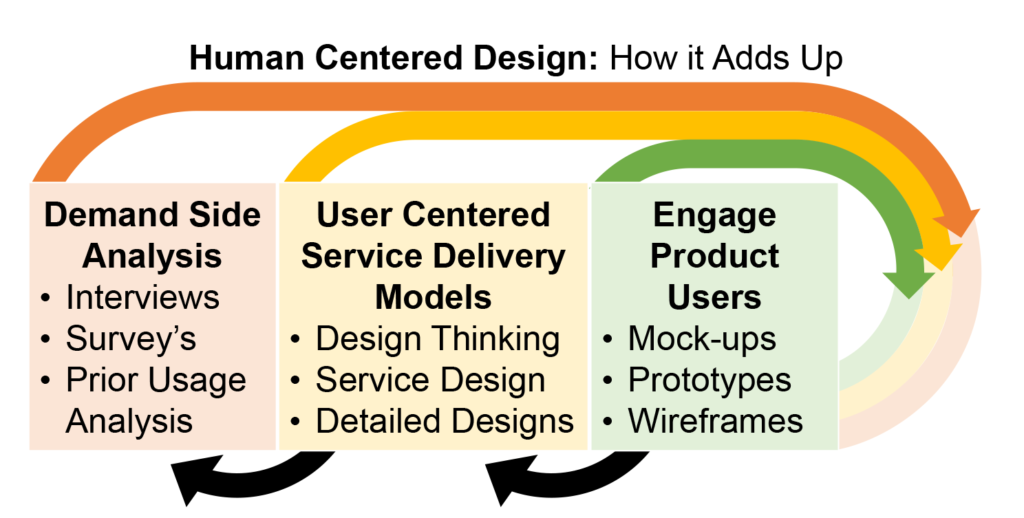
This project used human centered design (HCD), putting user needs, desires, and abilities at the center of the process. This also uses iterative feedback from each step to inform the analysis. Seeking clarity at each step, it transitions the dashboard away from a mixed experience that’s difficult for users to navigate and hard for the customer to maintain.
It uses a three step process. The first step is Demand Side Analysis. This engages users at the earliest opportunity through interviews and surveys. The team also conducts a Prior Usage Analysis. Next, they design a User Centered Service Delivery Model. This incorporates Design Thinking, Service Design, and Detailed Design. Finally, they again Engage Product Users by introducing Mock-Ups, Prototypes, and Wireframes. After iterating through these three steps, the team identified and built an application layer on a PHP/Drupal framework allowing for easy content manipulation without requiring technical knowledge.
User Friendly, Data Driven Insights at Lower Cost
This modernization project sunsetted legacy infrastructure and reduced high-cost maintenance. The new dashboard application further streamlined data collection, introduced omnichannel distribution of IT data, and improved the overall user experience. Moreover, by improving the process through human centered design, the customer improved the user’s ability to make evidence based decisions.
This project not only enhanced user experience it also supported requests for better data-driven decision making in government. While modernization projects frequently address high maintenance costs, human centered design adds an additional element. Improved user experience not only saves money, it enhances transparency, delivering better government to all.
This month we’re sharing success stories from our Data Practice. Follow us on LinkedIn for more insights. Check out our Data Solutions section for more from our Enterprise Modernization Experts.
About Karsun Solutions
Karsun Solutions modernizes enterprise systems enabling agencies to make the next technological advancement their next opportunity to elevate mission capability. IT solutions from Karsun are tailored to meet agencies’ unique needs and optimize operations. These solutions adapt and stay relevant to current trends while using secure, digital architecture built to last. It is a proven modernization partner whose expertise elevates agency capabilities and ensures every next opportunity is within reach.
Karsun experts and innovators took the stage at Imagine Nation Executive Leadership Conference (ELC) 2021. The annual conference for the American Council for Technology – Industry Advisory Council (ACT-IAC) is the organization’s marquee event. In addition to graduating Karsun’s 11th ACT-IAC Fellow, Raminder Saluja, Karsun Senior Vice President Ben Marglin joined a panel on Exploring the Next Generation of Acquisition Innovation. Also an event sponsor, Karsun is a longtime supporter of ACT-IAC. Its leadership acts as mentors, experts and participants in its industry programs.
Raminder Saluja Graduates from the Partners Program
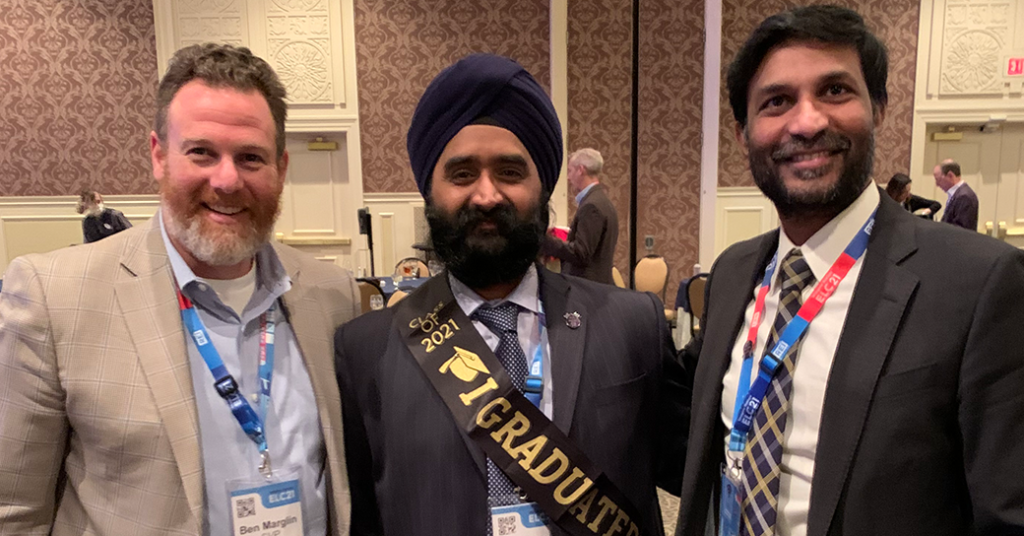
In a recognition ceremony held at ImagineNation ELC, Karsun Solutions Senior Director Raminder Saluja graduated from the prestigious Partners Program. Over the last two decades, the Partners Program has been ACT-IAC’s premier professional development program. Participants are selected among rising senior executives. Karsun boasts one of the largest cohorts of Partners alumni in the industry.
At Karsun, Saluja leads the modernization strategy for its Federal Aviation Administration (FAA) portfolio. He internally steers technical delivery teams to leverage AWS and Azure infrastructure and DevSecOps frameworks. With over two decades of technology experience, he is also well versed in working with agencies within NATO, the Intelligence Community, and Immigration services. His core belief is that innovation and technology are tools to solve business problems and not constraints around which processes are reorganized. This often resonates with customers seeking modernization and upkeep of their legacy systems.
Ben Marglin Explores Next Generation Acquisition Innovation
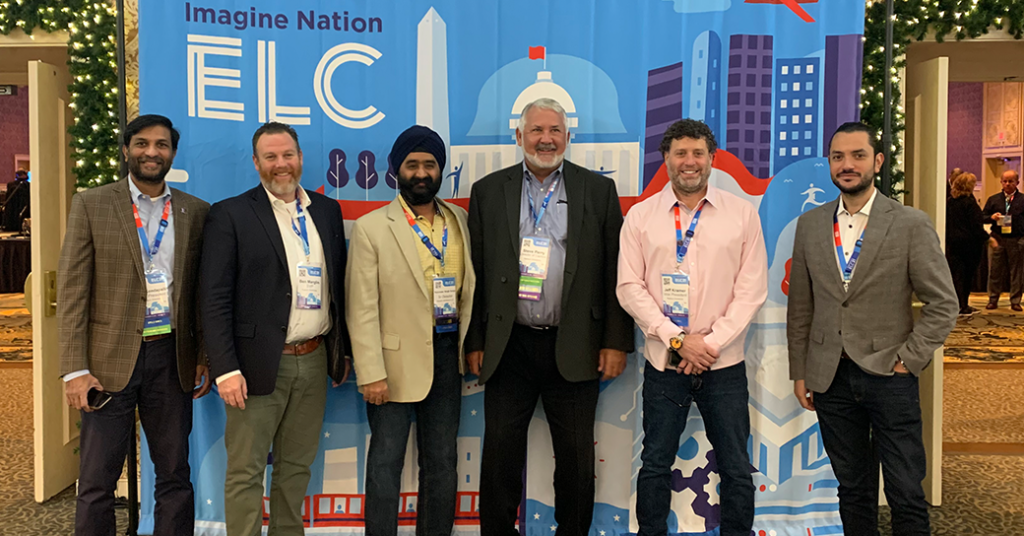
Earlier at the conference, Karsun Solutions Senior Vice President of Client Solutions Ben Marglin spoke during the panel discussion on Exploring Next Generation Acquisition Innovation. Adopting the overall theme Adventures in Change, the conference examined the impact of innovation on the federal IT industry. This talk was included as part of the Changing the Way We Work track. The collaborative session examined if accelerating IT modernization and innovative acquisition practices supported agencies’ goals to meet mission critical needs faster, cheaper and more efficiently.
During the panel, Marglin briefly described Karsun’s novel approach to enterprise modernization with its acquisitions customers. Karsun’s Acquisitions Modernization domain is not only one of its most innovative, it is one of its original offerings. Past solutions include analytics platform modernization, cloud migration and legacy application modernization from an on-premise database. Karsun currently performs work acquisition innovation under the GSA COMET BPA.
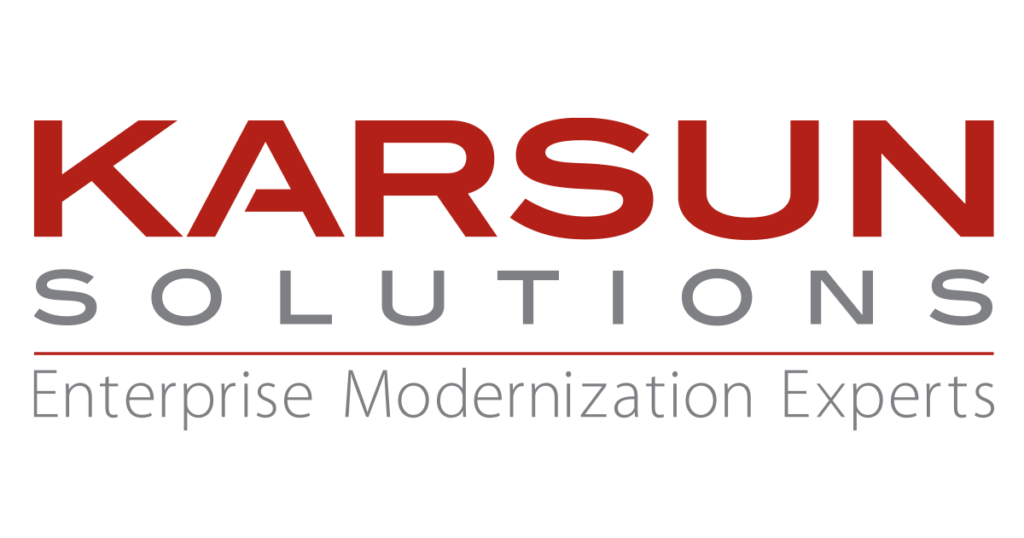
About Karsun Solutions
Karsun Solutions is a fast-growing, innovative enterprise modernization firm. Recently awarded Best Company Culture by Comparably.com, its teams deliver modern software development, cloud, and data solutions to customers at government agencies including the Department of Homeland Security, Federal Aviation Administration and General Services Administration. Leveraging GoLean, Karsun teams drive digital transformation and help its government customers Do Extraordinary. Learn more at Karsun-LLC.com.
Karsun Solutions strengthened its relationship with Amazon Web Services (AWS) through its Innovation Center Data Practice this fall. The center hosts the DataOps NoVa Meetup, a professional development group that introduces the Northern Virginia data and IT community to the latest practices, vendors and solutions for DataOps. The Meetup partnered with AWS for two events.
The Zen of DataOps
On October 22nd the Meetup featured a virtual presentation on The Zen of DataOps. The event began with a brief overview of Karsun’s Data and Cloud Practices by Shaunak Ashtaputre. Next, it welcomed AWS expert Stephen Moon. This virtual presentation dove into AWS Lake Formation and the Data Supply Chain Pipeline.
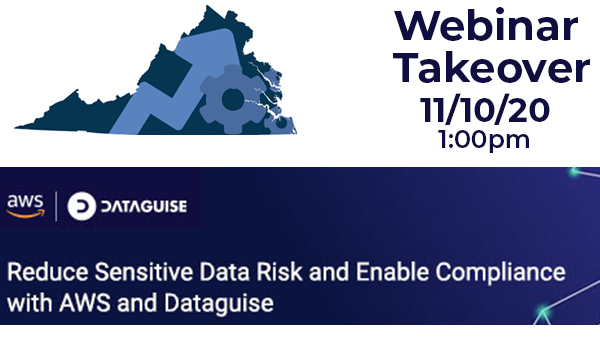
AWS and Dataguise Help Karsun Customers Improve Data Governance
Shaunak Ashtaputre, Director of the Data Practice and Co-Founder of DataOps NoVa, was invited to share a case study at an event co-hosted by AWS and Dataguise in November 2020. This webinar delved into a specific data governance solution, built with Dataguise on AWS, for one of Karsun’s public sector customers. Learn how these offerings can Reduce Sensitive and Personal Data Risk and Enable Compliance here.
AWS Resources Beyond Data
Karsun Solutions is a proud AWS Advanced Consulting Partner. As such it offers complete cloud solutions in addition to modern software development and data solutions. Current cloud solutions include cloud migration, cloud platform buildout and serverless computing.
Cloud Runway

Included in Karsun’s migration solution is the Cloud Runways toolkits. This enables cloud first organizations to systematically migrate legacy systems to the cloud. The Cloud Practice uses a proprietary multi-criteria decision support framework to perform a robust assessment of the solution providers’ key characteristics. Considering characteristics such as interoperability, flexibility, SLAs and security allows the team to make an optimal selection on the providers. Karsun’s cloud experts also focus on balancing private, public, and hybrid cloud options based on economics, functionality, and security.
Through relationships with vendors like Dataguise and AWS Karsun offers high-quality cloud and data solutions. Its Data, Solution and Development practice backs up each of these resources through employee-centered training and enablement. Learn more about Karsun’s AWS offerings here.
Karsun Solutions concluded 2019 celebrating its ten year anniversary. In addition to early enterprise modernization leadership, it cemented a decade-long commitment to innovation through the Karsun Innovation Center (KIC). By combining industry leadership with ingenuity Karsun won multiple $100+ million prime contracts with IT modernization work at agencies including DHS, FAA, and GSA.
Today, the Innovation Center leads teams in researching emerging technologies, forming industry relationships, and developing customer prototypes. Karsun wraps up 2019 celebrating the innovative spirit driving these first ten years. From automation to zombie code the Innovation Center and Karsun leadership teams are IT leaders, lending expert counsel and educating the community on best practices in emerging technology.

ACT-IAC
Karsun Solutions Chief Operating Officer Terry Miller kicked off 2019 as the Industry Chair for the American Council for Technology and Industry Advisory Council’s (ACT-IAC) Partners Program. One of three professional development programs offered by ACT-IAC, the Partners Program pairs senior industry and government leaders together for a series of in-depth sessions throughout the year. This year’s program concluded with a series of panel presentations at the organization’s annual Imagine Nation ELC conference. In addition to the Partners Program, Senior Director of Business Development Juan Robles is an Industry Vice Chair for the Voyagers Program. Participants graduating from both the programs become ACT-IAC Fellows. In total two Karsun leaders became Fellows in 2019, Sudhir Duggineni and Shaunak Ashtaputre. Satish Alluri was selected for the 2020 Voyagers class. The addition of Satish will bring Karsun’s total number of ACT-IAC Fellows to ten.
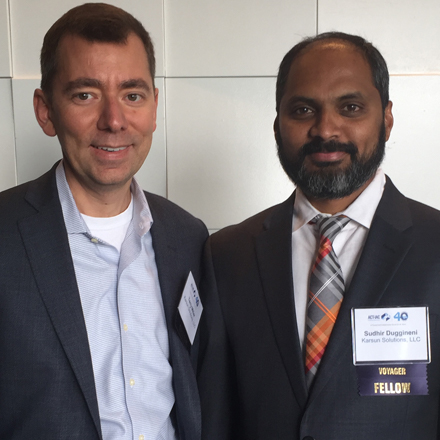
AI/ML and RPA
In addition to ACT-IAC fellowships, Karsun experts also join the organization’s working groups. Manish Bhatia from Karsun’s Cloud Solutions practice is a member of both ACT-IAC’s Intelligent Automation Working Group and Igniting Innovation Selection Committee. This fall the working group released its Robotic Process Automation (RPA) playbook. The playbook is designed for government organizations considering RPA pilots or accelerated development.
CMMI Level 5 DEV
In February 2019, Karsun Solutions announced its software development unit was appraised at CMMI Level 5 DEV. At this level, an organization continually improves its processes based on a quantitative understanding of its business objectives and performance needs. At the time of the appraisal, fewer than 50 organizations in the United States were rated CMMI Level 5 DEV.
COMET BPA
The General Services Administration (GSA) announced in November 2019 Karsun Solutions was one of twelve vendors selected for a spot on the CIO Modernization and Enterprise Transformation (COMET) BPA. The vehicle is intended to create a multiple award BPA on GSA’s IT 70 Schedule. It is the successor to 2014’s CAMEO contract. Karsun’s GSA DMS program also celebrated its first anniversary this year.
DevOps Innovation Practice
The KIC spun off its new DevOps practice led by Samir Bham. It is the second of several practice areas launching from the Innovation Center. An employee-focused research and development unit, it enables the adoption of DevSecOps practices. This practice, along with the Data Practice launched in 2018, hosts weekly Work from KIC workshops held in the new Herndon Headquarters.

Employee Development
Karsun Solutions invested in employee development early in 2019. The firm took the opportunity to train the more than 150 team members impacted by the partial government shutdown. These team members returned to work in February with new skillsets in microservices, domain driven design, web application security and cloud solutions.
FEMA Grants Management Modernization
This year Karsun began work on the FEMA Grants Management Modernization (GMM) program. The Department of Homeland Security (DHS) awarded Karsun Solutions the Agile development contract. The program will streamline grants management across the agency’s 40+ grant programs through a user-centered, business-driven approach. This five-year single award Blanket Purchase Agreement (BPA) with a ceiling value of $80 million was awarded under Full and Open Competition. It was Karsun’s first Full and Open contract win.
Government Competency
Karsun Solutions received its AWS Government Competency in 2019. This designation recognizes that Karsun Solutions has deep experience developing solutions for government customers delivering mission-critical workloads and applications on Amazon Web Services. Leading up to the competency announcement the cloud solutions and DevSecOps practices shared some of their favorite AWS case studies.
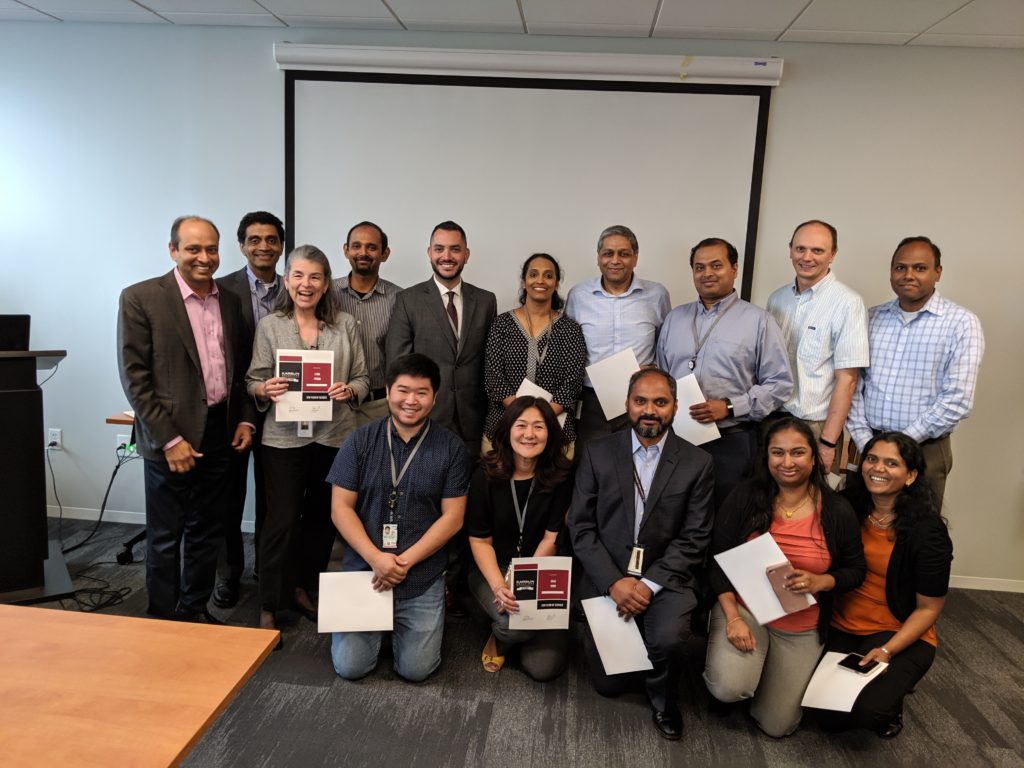
Office Opening
In September Karsun Solutions moved into its new 75,000 square foot headquarters in Herndon, Virginia. The new facility supports teams servicing Karsun’s DHS, FAA, and GSA portfolios. It is also home to the Karsun Innovation Center and training facilities.
Records Digitization
Karsun Solutions Co-Founder and Chief Architect Kartik Mecheri appeared on Government Matters TV in April. On the program, he broke down NARA 2022 and the future of records digitization. Tune in to learn more about Karsun’s modernization approach.
SEC One IT
In March, Karsun Solutions announced the Securities and Exchange Commission awarded KHS Solutions, LLC a spot on the SEC One IT contract. SEC One IT is an indefinite delivery-indefinite quantity (IDIQ) contract with a ceiling value of $2.5 billion. KHS Solutions, LLC is an SBA approved 8(a) Mentor Protégé Joint Venture between Karsun Solutions (Mentor) and Mindcubed (Protégé).
Test Automation
Automation Test Lead Aditi Mulay spoke at several industry events throughout 2019 including Agile Testing Days and SeleniumConf London. Fellow automation test lead Ricardo Mediavilla joined her for Agile 2019. A trainer and mentor to QA teams Aditi speaks on Object Oriented Programming approaches to automation frameworks. She advocates for automating in the right manner and ensuring tests are reusable and maintainable.
Zombie Code
In October Karsun Solutions as part of its mentor-protégé JV KHS Solutions shared “Zombie Code,” a look at the importance of dead code analysis. This practice is already part of Karsun’s development methodology. It is also one of many ways the Innovation Center proactively prototypes solutions to common modernization problems while building a roadmap for adoption among Karsun’s delivery teams. The Zombie Code video was a special Halloween release on LinkedIn. Follow Karsun there for the latest on enterprise modernization, corporate growth and award wins.
The American Council for Technology and Industry Advisory Council (ACT-IAC) announced the release of the first volume of its Intelligent Automation Playbook. This playbook is designed for agencies considering Robotic Process Automation (RPA), running pilots or accelerating deployment. By automating administrative tasks RPA may also address the shrinking federal workforce and decreasing budgets.

The President’s Management Agenda, Cross-Agency Priority Goal 6 encourages shifting from low-value to high-value work. This imperative challenges agencies to find efficient solutions for administrative processes. These include tasks like data entry, completing forms using information read in a document and extracting then processing data. In addition to improving efficiency, accuracy, auditability and compliance, RPA adoption should reduce cycle time and increase citizen and employee satisfaction.
The playbook addresses implementation from organizational readiness through operating and maturing RPA. The playbook was preceded by the Intelligent Automation Primer, released in January 2019. This is suggested reading for those unfamiliar with intelligent automation and RPA.
The playbook and primer were developed by ACT-IAC’s Intelligent Automation Working Group. Manish Bhatia, from Karsun Solutions Cloud Practice, is a member of the working group. In May he shared his thoughts on the solutions demonstrated at ACT-IAC’s Igniting Innovation event.
Karsun Solutions supports ACT-IAC’s professional development and working group programs. ACT-IAC programs build relationships between government and industry. Like many Karsun team members, Manish is deeply connecting to the IT contracting industry through ACT-IAC. In March, Karsun Solutions spotlighted his involvement in these emerging technology communities.
Manish Bhatia, an innovator the in Karsun Solutions Cloud Practice, recently attended Igniting Innovation, the American Council for Technology and Industry Advisory Council’s (ACT-IAC’s) celebration of innovation in government modernization. Below he reflects on his experience at the event and as a member of the evaluation committee. This post first appeared on LinkedIn.

One cold winter day in 2016 as I was preparing to join the GovCon industry, my mind was clouded with certain doubts – I was wondering whether the government was ready ‘Enough’ to imbibe the latest and greatest in technologies for efficient and effective solutions for the citizens. What better use of the hard earned taxpayer’s money? Hailing from the commercial sector where cutting-edge is the norm, the Government industry is thought by many to be ‘jaded’ or slow in adopting the latest and greatest in technology.
My doubts quickly died when I first joined Karsun Solutions LLC, where innovation was weaved into the very fabric of the company. The entire focus was to achieve the extraordinary while defying the status quo for its customers utilizing nothing but the most advanced technologies and processes. Additionally, my selection as an evaluator on the ACT-IAC Igniting Innovation panel convinced me to change my own ‘jaded’ belief! I am honored to be on the panel to assess and evaluate the multitude of innovations across various walks of the Government industry. Applicants here are solving an array of ultra-complex problems with use cases ranging from utilizing Augmented Reality to save lives of Air Force Pilots to sophisticated Blockchain and Machine Learning solutions for the age-old problem of government acquisition systems to everything in between.
I was stunned! A few of the use cases strongly caught my attention:
- Commercial Solutions Opening (CSO) – GSA FEDSIM
- HHS ACCELERATE – U.S. Department of Health and Human Services
- Pilot Training Next – SAIC
Process Improvement — In the world of Government business, it is a known fact that obtaining efficient service from the GovCon community is difficult, whether by vendors or by the government agency. One has to comply with FAR rules and often times it’s difficult for both the government and the startups to do business due to these regulations. GSA FEDSIM’s Commercial Solutions Opening – (CSO) initiative is an answer to this problem. It offers a platform for the government to buy innovative solutions from organizations without complying with the FAR rule book. GSA and DHS can procure innovative services easily through the reduction of barriers, contract clauses and paperwork, in turn freeing the government to obtain top-notch services from innovative companies. The CSO solution is a win-win for both the sectors, bringing in high-quality innovation to agencies at a break-neck speed which took months in the previous procurement process.
Innovative use of Technology — HHS ACCELERATE (U.S. Department of Health and Human Services) could very well become the future of Procurement not only within the US government but also for governments across the world. It’s a one stop shop for Procurement with APIs to Sam.gov and has dramatically improved user experience between the contracting officer and vendors by pre-populating templates. Vendors can enhance their profile by adding capabilities that could be easily searched by contracting officers. They can quickly upload their catalogs on the platform while contracting officers can easily create documents like RFI with a click of a button.The key is the trust and transparency that is shared across the system using a decentralized database incorporated using Blockchain technologies. This enables an agency for ‘Smart Contracts’ that could be executed by various parts of the agency rather than relying on one particular department. ACCELERATE is also powered by AI and machine learning which reviews content within the agency acquisition plan and selects applicable clauses for preview along with the populated form and solicitation at any point.
Disruptive Innovation to save lives – Pilot Training NEXT (PTN) is an experiential approach designed to maximize pilot trainees’ capacity for learning. The US Air Force Air Education Training Command is using this approach to accelerate students through the undergraduate pilot training course that teaches them basic airmanship and aircraft control. PTN utilizes Augmented Reality to generate a sophisticated simulation environment in which a trainee student can operate a variety of aircraft seamlessly. This allows them to develop critical thinking skills to fly safely and think quickly when operating an aircraft beyond the memory associated with flying a single type of aircraft. It uses biometrics, advanced analytics, human performance and advanced learning strategies to achieve and provide indicators of practical learning and student improvement. Students who use PTN can quickly learn from mistakes made during simulation allowing them to train in different situations thus saving lives in the future. PTN is the future of Air Force.
My thoughts are certainly changing as the season is changing from winter to summer and I envision that the government along with GovCon community will continue to make big strides in making the lives of citizens better through innovation and events of the likes — ACT-IAC Igniting Innovation is encouraging to solve problems like never before! We all have a responsibility to keep igniting the innovations as this is what humans have done from the beginning of evolution and this is what have to do for a better future for generations to come.
Manish Bhatia represents Karsun’s collaborative spirit within the IT contracting industry. Check out the Karsun Innovation Center for the latest on IT modernization innovation at Karsun.
